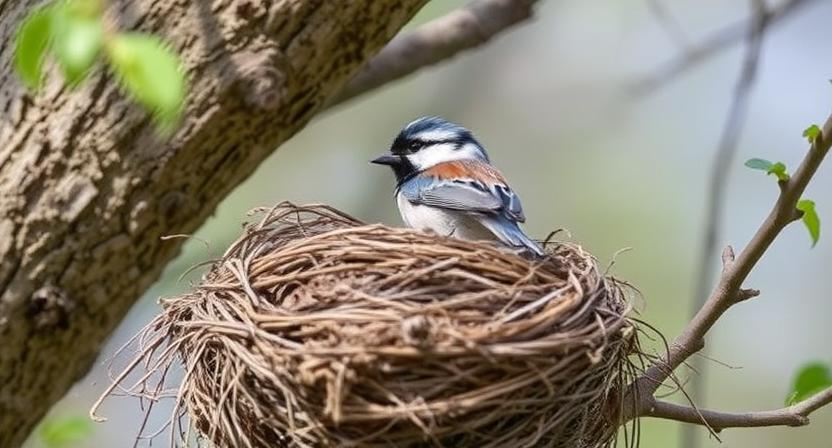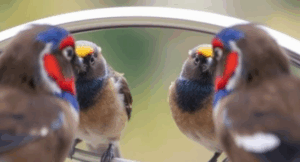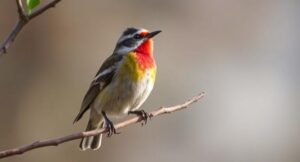
Where Do Birds Build Their Nests?
Birds and their Nesting Habits

Birds display a remarkable diversity in their nesting habits, with different species exhibiting various preferences and strategies. Nesting habits depend on factors such as the bird’s anatomy, behavior, and habitat. Some birds, such as the American Robin, build cup-shaped nests made of twigs and grasses, situated in trees and shrubs. These nests provide shelter and camouflage for the eggs and young chicks.
Other birds, like the Killdeer, construct nests on the ground, using various materials including pebbles, twigs, and leaves. Their nests are usually small depressions in the ground, well-camouflaged amidst the surrounding environment. Similarly, some bird species, such as the House Sparrow, have adapted to the human environment and build nests on man-made structures such as buildings and bridges. These nests are often made of a combination of natural and artificial materials, providing a safe place for the birds to reproduce.
Birds also exhibit more unconventional nesting habits. Some species, like the Burrowing Owl, create nests in caves or burrows, excavating tunnels for protection and insulation. Others, such as the African Weaverbirds, construct intricate nests woven from grasses and other plant materials, suspended from tree branches. These nests are not only functional but also serve as elaborate displays to attract mates.
Understanding the nesting habits of birds provides valuable insights into their reproductive behaviors and overall ecology. By studying the various types of nests and the factors that influence their location, scientists can gain a better understanding of bird populations and their nesting requirements. This knowledge is essential for conservation efforts and aiding in the preservation of bird species and their habitats.
Different Types of Bird Nests
Birds are incredibly diverse creatures, and this diversity is reflected in the various types of nests they build. One common type of bird nest is the cup nest, which is shaped like a shallow bowl and is typically built in the branches of trees or shrubs. The cup nest provides a secure and comfortable space for the eggs and chicks, as it is usually lined with soft materials such as feathers, moss, or even animal fur.
Another type of bird nest is the platform nest, which is constructed by birds such as ospreys and eagles. These nests are large and sturdy, often built on high structures like cliffs or utility poles. Made of twigs and branches, platform nests can be reused by the birds year after year, getting bigger and heavier each time. These nests offer a spacious and safe environment for the growing chicks, as well as protection from predators.
Factors That Influence Nest Location
Nest location is a critical decision for birds, as it greatly affects the survival and success of their offspring. There are several key factors that influence where birds choose to build their nests. Firstly, the availability and abundance of suitable nesting sites play a crucial role. Birds will select locations that provide them with the necessary features, such as secure shelter, protection from predators, and easy access to food and water sources. Whether natural or man-made, these sites offer a sense of security and convenience for the birds.
Secondly, environmental conditions also influence nest location. Birds are highly adaptable creatures, and they choose nest locations that can provide optimal conditions for incubating eggs and raising their young. Factors such as temperature, humidity, and exposure to sunlight are carefully considered when selecting a nesting site. Fluctuations in weather patterns, such as strong winds or heavy rainfall, can also impact the suitability of a particular location. Consequently, birds must be selective in choosing a spot that offers the best chances of survival for their offspring.
Nest Building Materials Used by Birds

Birds exhibit an incredible diversity when it comes to the materials they use for nest construction. These materials primarily depend on the species of bird and the environment in which they reside. Some birds are known to weave intricate nests using various types of vegetation, such as twigs, leaves, grasses, and even moss. These materials provide sturdy structure and insulation to protect the eggs and nestlings from predators and the elements.
Other bird species prefer to incorporate materials like feathers, fur, and even spider silk into their nests. The softness of these materials ensures a cozy and comfortable environment for the growing chicks. Feathers, in particular, can be found in the nests of numerous bird species, as they offer excellent insulation and help regulate temperature. It is fascinating to observe how resourceful birds are in their selection of nest building materials, adapting their choices based on availability and suitability for the specific needs of their young.
Nests Built in Trees and Shrubs
Nests built in trees and shrubs are among the most common types of bird nests found in nature. These nests are typically constructed by birds that prefer a more elevated and secure location for raising their young. The height of the nests, nestled amongst the branches and foliage, provides birds with protection from ground predators and allows them to have a better view of their surroundings. Many different bird species, such as robins, sparrows, and warblers, are known to build their nests in trees and shrubs.
Birds that build nests in trees and shrubs have a variety of construction techniques and materials. Some birds, like the African weaverbirds, are well-known for their intricate and elaborate nests woven from grass and other plant materials. These nests are often suspended from tree branches and hang like baskets. Other birds, such as woodpeckers, excavate holes in tree trunks to create their nests. These cavities provide a safe and secluded space for raising their young. Additionally, some bird species, like the American robin, build cup-shaped nests using a combination of twigs, grass, and mud, which they typically place on sturdy tree branches. The variety of nest designs and materials used by birds in trees and shrubs showcases the impressive adaptability and resourcefulness of these feathered architects.
Nests Constructed on the Ground
Ground nesting is a common breeding strategy adopted by a variety of bird species. These birds prefer to build their nests on the ground, rather than in trees or shrubs. One key advantage of ground nests is that they often provide superior camouflage, ensuring the safety and security of the eggs and chicks. By placing their nests on the ground, birds can blend in with their surroundings, making it more difficult for predators to spot them. Additionally, ground nests are usually well hidden among grasses, leaves, or rocks, further enhancing their protection.
Various factors influence the choice of location for ground nests. Some birds prefer open areas, such as meadows or fields, where they have a clear view of approaching predators. Others opt for more secluded habitats with dense vegetation, ensuring better cover for their nests. Additionally, the ground composition plays a vital role in nest construction. Some bird species specifically select sandy or gravelly areas, as the loose soil allows for easier digging and burrowing. In contrast, species that build shallow nests may choose firmer ground, such as clay or compacted soil. The diversity in ground nest sites reflects the adaptability and resourcefulness of birds when it comes to ensuring the safety and success of their offspring.
Nests Built on Man-Made Structures

Man-made structures have become a common alternative for birds to build their nests, providing a convenient and safe haven amidst the encroachment of urbanization. It is not uncommon to find nests perched on rooftops, chimneys, or even electrical poles. These structures offer birds protection from predators and unfavorable weather conditions, while also allowing them to easily access food sources in nearby gardens or residential areas.
Birds that choose to build their nests on man-made structures display an adaptable nature, making use of the available materials and architecture. They may utilize twigs, leaves, grass, or even discarded objects like strings, plastic, or feathers to construct their homes. The nests are usually built in nooks, crannies, or corners, ensuring stability and protection against strong winds. While some species prefer to build their nests individually, others may form colonies on buildings, resulting in a vibrant and social environment amidst the concrete jungle.
Nests Created in Caves and Burrows
Caves and burrows provide a unique nesting environment for some bird species. These birds have adapted to utilize existing underground spaces to create their nests and raise their offspring. The dark and secluded nature of caves and burrows offers protection from predators and harsh weather conditions. Additionally, the stable temperature and humidity levels inside these natural cavities provide a suitable environment for egg incubation and chick development.
Birds that nest in caves and burrows include species such as puffins, burrowing owls, and some species of swifts. Puffins, for example, excavate deep burrows in the soil or use existing burrows created by other animals. They line their nests with grass, feathers, and other debris for added insulation and comfort. Burrowing owls, on the other hand, often occupy abandoned burrows made by mammals or reptiles, lining them with soft materials like feathers and grass. These nests are typically located in open grasslands or deserts, where the birds can easily spot approaching predators. The ability to nest in caves and burrows provides these birds with a safe and secure habitat for raising their young.
Nests Constructed in Unusual Locations
Nests play a crucial role in the reproduction cycle of birds, providing a safe place for eggs to hatch and chicks to grow. While most bird species prefer to construct their nests in trees, shrubs, or on the ground, there are some exceptional cases where birds have been known to choose rather unusual locations for their nests. These unique nesting habits can be a result of various factors, such as limited availability of suitable nesting sites or the need to avoid predators.
One unusual location where some birds choose to build their nests is on man-made structures. This can include nests built on buildings, bridges, or even sculptures. These locations may offer a safe and sheltered environment away from predators or provide convenient access to food sources. It is fascinating to witness birds adapt to their surroundings and utilize man-made structures as suitable alternatives for nesting, often blending their nests seamlessly into the architecture of the structures they choose.
In addition to man-made structures, birds have also been known to construct their nests in caves and burrows. This behaviour is more commonly observed in cliff-dwelling species or those that inhabit rocky coastal areas. By utilizing the protection and seclusion offered by caves or burrows, these birds can secure their nests from the elements and potential threats. It is remarkable how these birds have developed the ability to adapt their nesting practices to such unconventional habitats, demonstrating the incredible versatility of bird species when faced with unique environmental challenges.
The Role of Nests in Bird Reproduction

Bird nests play a pivotal role in the reproduction of avian species. These carefully constructed homes provide a safe space for birds to lay their eggs and raise their young. Nests serve as essential incubators, providing warmth and protection for the developing eggs. The materials used in nest-building, such as twigs, grass, feathers, and mud, are not merely random choices but are selected to create a suitable environment for the eggs and hatchlings. By providing a secure and conducive habitat, nests greatly increase the chances of successful reproduction for birds.
Furthermore, nests also play a crucial role in the behavior and social dynamics of bird populations. They are often used as a means of attracting mates, with many bird species engaging in elaborate courtship displays around their nests. Nests can convey important information about the health, strength, and genetic fitness of the male building the nest, thus influencing the selection of a mate. This intricate connection between nests, courtship rituals, and mate selection highlights the significance of nests in ensuring the continuation of bird populations. Without suitable nests, birds would struggle to reproduce successfully, greatly impacting their numbers and overall biodiversity.


